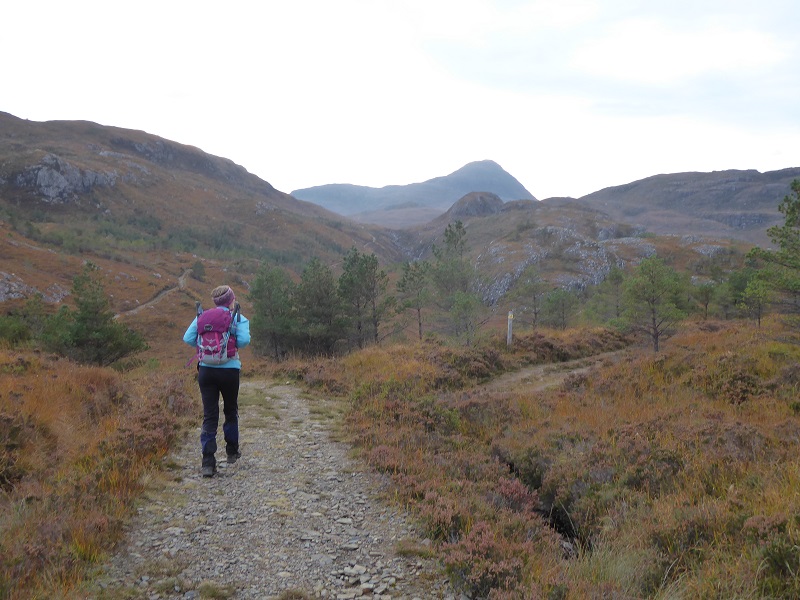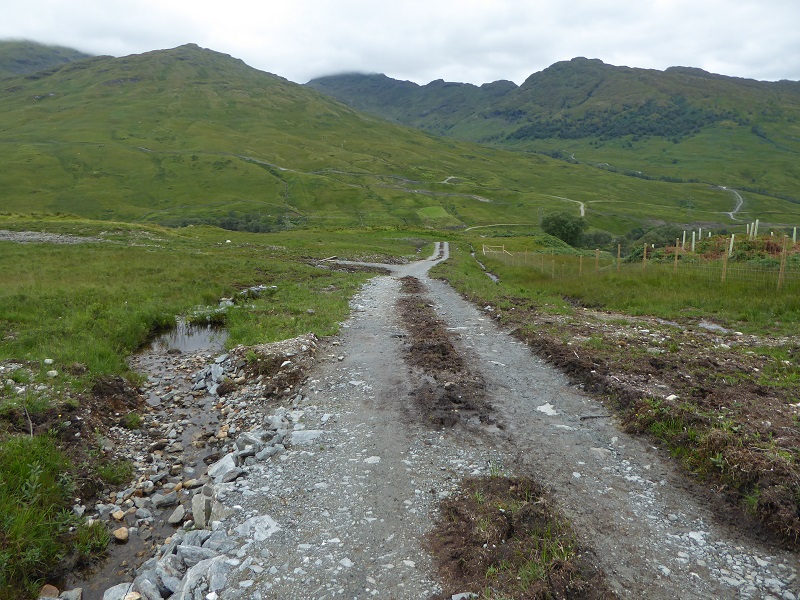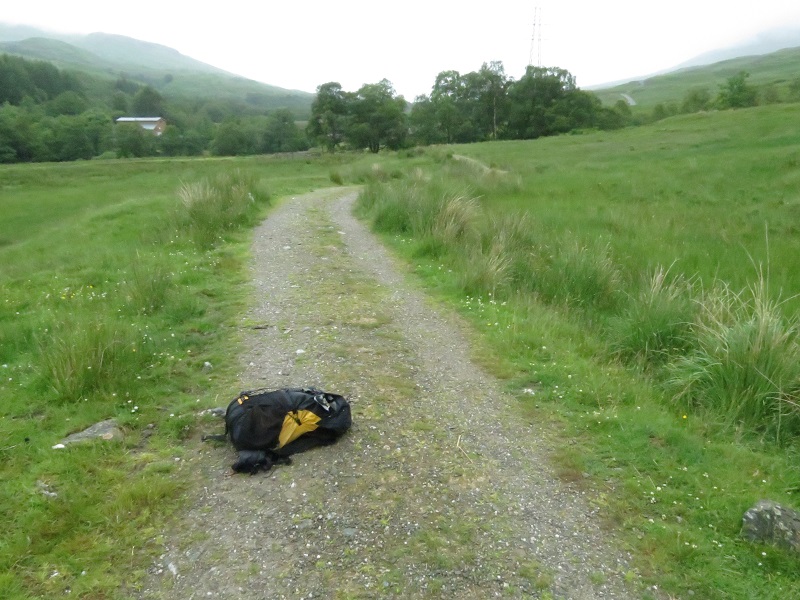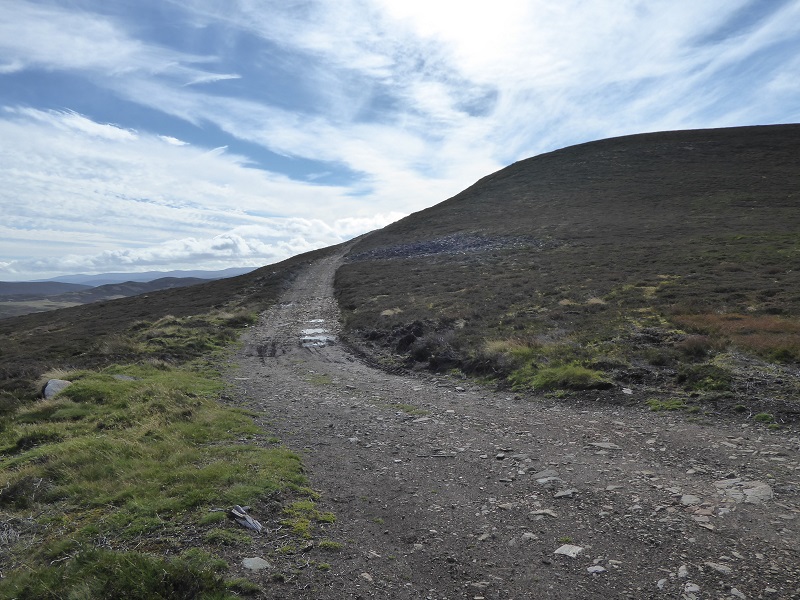
I am up in the north-west Highlands for a week, staying near Gairloch, and yesterday walked into Beinn an Eoin from Loch Bad Scalaig. The first part of the track is through a native woodland scheme planted in 1998 and then leads on to the former bothy, Poca Buidhe, almost 12k in all. Its used by vehicles for stalking. What struck me is how narrow it is, like a footpath, about 1.5m wide and as a consequence enjoyable to walk. In many places the Poca Buidhe track just disappears from view although there are still places where there is a signficant impact on the landscape, as is in the photo above where the track runs above the Abhainn a Garbh Coire.
On my reading the Loch Lomond and Trossachs National Park Authority set out similar aspirations for hill tracks in the National Park in its Guidance on Renewables:
“It is expected that where possible, the type of vehicles that will require access after restoration of the tracks will be light, low-pressure vehicles, such as quad bike or equivalent.
If access tracks are to be retained for light low-pressure vehicles, the visual impact of these tracks should be minimised by downsizing the width, green re-instatement track methods and local mitigation measures such as planting and rock/boulder placement”.
ALL of the hydro tracks in Glen Falloch, approved by LLTNPA officers are far wider than would be needed for a quad bike or similar, leaving aside there is no evidence that there was any “overwhelming need” for these tracks to be retained (see here).

The narrowest tracks are about 2m wide. Gordon Watson, the Chief Executive of the LLTNPA, has subsequently stated in writing that planning conditions require construction tracks to be reduced to 2m (2.5m at bends). While I believe this is simply his latest re-interpretation of the LLTNPA’s policy and, as the Torridon photo shows, is needlessly broad, in practice the LLTNPA was approving tracks in Glen Falloch while he was Director of Planning that are wider than his quoted maximum:
- The Glen Falloch extension track is 2.5m wide (see here)
- The Eas Eonan and Allt a Chuillinn schemes 2.5m (see here)
- Allt Fionn width not specified but the “minimum” necessary for use by a landrover (see here)
Only the Ben Glas track, approved at end of 2015, states the track should be reduced to 2m (and 2.5m at bends).
This shows that once again LLTNPA officers are ignoring their own policy, both the written policy which was good in intention if too vague, and Gordon Watson’s re-interpretation of this to mean tracks should be 2m wide. I don’t believe there was an “overwhelming reason” to allow these hydro construction tracks to be retained but even if there was, if the Gairloch Estate can manage on 1.5m tracks so should estates within our National Parks.

Reducing the width of these hydro tracks would help them merge with the landscape over time (which is what the LLTNPA claims it wants). The LLTNPA should be setting an example of best practice and I regret that so far it has conspicuously failed to do this. It is not too late. The Glen Falloch Estates will make a fortune from these hydro schemes over the next 10 years paid for by the public and the least they can do in return is reduce the impact of the destruction they have caused.

At least the LLTNPA appears to have a policy position on the width of tracks. The Cairngorms National Park Authority produced an 18 page report on the Dinnet Hill Tracks without mentioning the width of tracks once item8aadinnettracks20160004det. More on that in a future post.
An important additional point is that planning authorities should insist that all tracks in open country have a vegetation strip down the middle. This should apply to proposed new tracks and to existing tracks where an application has been made to upgrade them. Such strips go some way to reducing a track’s visual intrusiveness. Both the full planning application process and the Prior Notification process allow for planning authoriites insisting on this. There may also be a case for a central vegetation strip for some forestry tracks, particularly in native woodland or when they follow routes used regularly by walkers.
I agree and while the LLTNPA includes reference to this in their guidance as you can see in the second photo, the central strips in Glen Falloch are disappearing fast because cattle have been allowed to trample over it before they have become properly established. The LLPNA appears so far to have failed to take any enforcement action to remedy this. I would like to see all the tracks narrowed and a central strip established as you say.